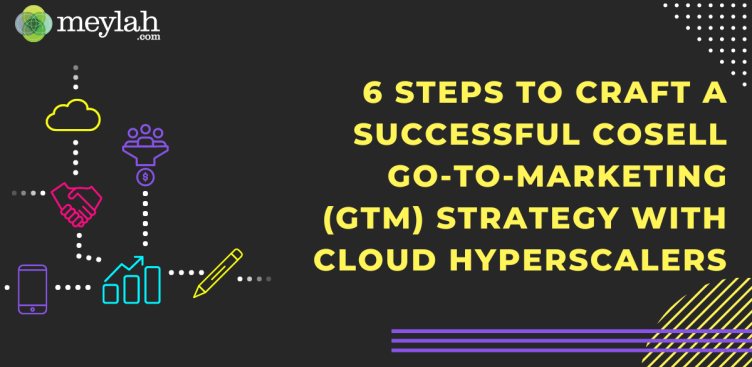Discover the groundbreaking strategies that have made Barbie’s Go-To-Market (GTM) approach absolutely amazing. Developed by our esteemed CMO Chaitra Vedullapalli, this post takes you behind the scenes of Barbie’s triumphant marketing campaign.
Amidst the challenges of the Hollywood strike, Barbie faced a unique obstacle: lead talent could not participate in the promotional activities. However, through the unwavering support of the audience and communities, Barbie’s narrative and GTM plan of action captivated the world.
In this exclusive post, our CMO reveals the secrets behind Barbie’s success. From crafting a compelling narrative to implementing an innovative GTM strategy, Barbie’s marketing feat serves as a true masterclass in pushing boundaries and driving results.
Experience the remarkable journey of Barbie as she defies conventions and reshapes the industry. Visit link to dive into the unparalleled GTM strategy that propelled Barbie to new heights during challenging times.
Embrace the lessons learned from this iconic brand and unlock the potential for innovation and success in your own marketing endeavors. Together, let’s learn from the masterclass that is Barbie and revolutionize the way we approach GTM strategies.
Don’t miss out on this inspiring and insightful article by our visionary CMO.
Summarized Unleashing the GTM Expert within: A Deeper Dive into Barbie’s Success
As a GTM expert, I delved deep into the box office collections, PR tactics, and distribution strategies surrounding the Barbie phenomenon. What I discovered left me truly astounded. The way Mattel’s Barbie marketing team and Warner Bros. studio crafted their PR and distribution strategy, leveraging the power of collective action, was nothing short of brilliant.
A Marketing Masterclass in Motion
The marketing frenzy that accompanied the release of Barbie was unparalleled. Mattel’s Barbie marketing team and Warner Bros. spared no expense, executing a marketing blitz that set new industry standards. Every detail was meticulously planned, resulting in a mesmerizing spectacle that showcased true marketing genius in action.

The Astonishing ROI of an Exceptional GTM Strategy
It’s no secret that a successful marketing campaign comes with substantial financial investment. However, the astounding returns generated by Barbie’s GTM strategy are a testament to its brilliance. For every dollar spent on PR and marketing, they reaped tenfold in results. This is the power of a well-executed GTM strategy that seamlessly activates PR and integrated marketing efforts.
- Budget = $100M
- Gross Revenue (Worldwide) = $780M (as of 7/30/23)

Here are some GTM Strategies that leveraged technology, products and digital media that was personalized and specialized to create bold and visionary move. The Barbie Movie Maker Greta Gerwig has expertly harnessed the power of experiential stunts, traditional media, and user-generated content to create an irresistible pull towards the cinema. The strategic brilliance behind these endeavors is truly remarkable, fueling a wave of excitement and anticipation among fans. Here are some marketing activation that caught my attention
- ICONIC Dreamhouse: One of the standout moments in this marketing extravaganza was when Barbie star Margot Robbie covering Vogue to the doll’s iconic Dreamhouse being listed on Airbnb. Catapulting the iconic doll into the realms of high fashion and capturing the attention of a diverse and influential audience. This visionary move not only solidified Barbie’s status as a global phenomenon but also showcased the seamless integration of entertainment and cultural impact. The moviemaker has also leaned into experiential stunts, traditional media and user-generated content to push fans towards the cinema, from Barbie star
- Barbie Takes Over Times Square : In an unprecedented move, Barbie dominated Times Square with a larger-than-life billboard, showcasing the film’s dazzling visuals and captivating narrative, igniting excitement and anticipation among passersby.
- We are all Barbie : Released a selfie generator that let fans insert themselves straight into Barbie Land. The UGC tool meant anyone could star as Barbie, with their own tagline (“This Barbie is a… advertising journalist”).
- Stay in Barbie’s home : Star Margot Robbie made her character’s home aspirational by taking viewers on a tour of the iconic Barbie Dreamhouse for Architectural Digest.
- Barbie’s Charity Partnership : Showcasing the brand’s commitment to social responsibility, Barbie partnered with a renowned charity organization, showcasing Barbie’s positive impact on empowering young girls worldwide.
- Barbie is a jet-setter : When Barbie isn’t at home in the Dreamhouse, she’s jet-setting. That’s why the Béis x Barbie luggage collection just makes sense. The Barbie x Béis luggage collection was designed with millennials in mind
- Dress like Barbie : Fashion brands including Target, Gap and Show Me Your Mumu dropped Barbie-themed clothes, but Forever 21 and Claire’s collections speak to the recent wave of ‘90s nostalgia. The Forever 21 x Barbie collab features 76 pieces, from sunglasses to matching loungewear, cropped T-shirts and halter tank tops.
- Barbie goes dating : Off-screen, dating app Bumble has teamed up with the movie to turn Barbie and Ken into IRL dating coaches. The app is running a new experience where users can get motivation from all the Barbies and Kens featured in the movie (including Robbie’s main Barbie, Ryan Gosling’s Ken, President Barbie played by Issa Rae and Ken No. 2, who is Simu Lu).
- Barbiecore infiltrates lunch : Burger King Brazil’s Barbie-themed meal comes with a cheeseburger topped with a smoky pink sauce, a pink vanilla milkshake, “Ken’s potatoes” (fries) and a pink frosted doughnut.
- Barbie’s Influencer Campaign : To create a buzzworthy campaign, Barbie partnered with influencers worldwide, showcasing the brand’s positive impact on lifestyle, fashion, and self-expression.
Revolutionizing the Business Landscape
Barbie’s success story serves as a beacon of inspiration for marketers, entrepreneurs, and leaders across industries. It demonstrates the unlimited potential that lies within a thoughtfully crafted GTM strategy. By embracing innovative concepts, setting new standards, and investing in bold, forward-thinking initiatives, businesses can reshape their future.
Creating Cultural Shifts through Strategic Action
Beyond its commercial success, Barbie’s impact extended far beyond the box office. It ignited conversations, challenged societal norms, and empowered women of all ages to embrace their limitless potential. The combination of a compelling narrative, purpose-driven marketing, and strategic distribution fueled a cultural shift that transcends far beyond the realms of entertainment.
Unlocking the Power of GTM Strategy
Barbie’s triumph underscores the significance of strategic marketing and GTM excellence. By meticulously curating a holistic strategy that encompasses PR, distribution, and integrated marketing, businesses can create transformative experiences that leave an indelible mark on their target audience.
Let Barbie’s success serve as a catalyst for innovation for technology leaders, as we embark on a journey to unlock the full potential of GTM strategy and drive meaningful change.
So, the next time you watch a movie or witness a marketing masterclass unfold, take a moment to appreciate the strategic brilliance at play. It is through the fusion of storytelling and innovative marketing that we can inspire, empower, and shape our collective future.
Articles to read:
- Barbie Marketing 101: The Road to Inclusion Doesn’t Happen Overnight
- 9 Wildest Barbie Movie Marketing Stunts (& There’s Still 2 Weeks To Go)
- 7 GENIUS MARKETING STUNTS FROM ‘BARBIE’ AND WHY THEY WORK
Join the conversation and let us know how Barbie’s success story has inspired you to push the boundaries of your own GTM strategy.
Here are two sessions to get you all going:
- Accelerating Funding For Diverse Founders : Mastering Go-To-Market Strategies
- Founders Series: How to build Cosell GTM system for Microsoft Marketplace
Also tell me in the chat which movie or tech solution GTM you want me to dissect deeply and share my GTM perspectives. Learn more about Cosell GTM ramp to revenue program we just launched to help you explore strategies to accelerate your demand gen and partnerships with Hyperscalers.
Voice your thoughts in the comments below and embrace the power of strategic marketing in driving transformative change!
Join us in uncovering the power of Barbie’s GTM strategy and let’s create marketing excellence together.
Read the complete article on Linkedin.






 Get EXCLUSIVE INSIGHTS delivered straight to you.
Get EXCLUSIVE INSIGHTS delivered straight to you.